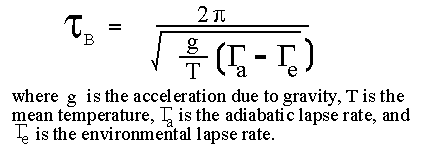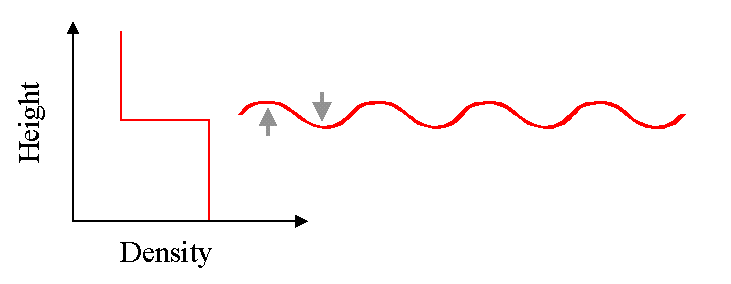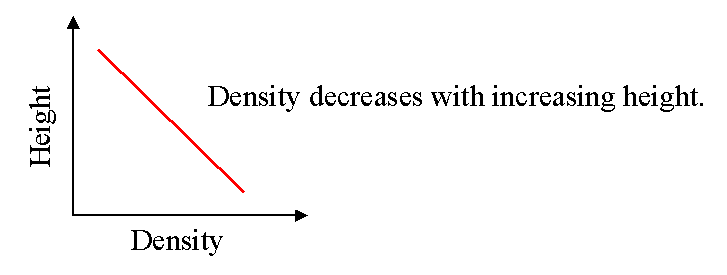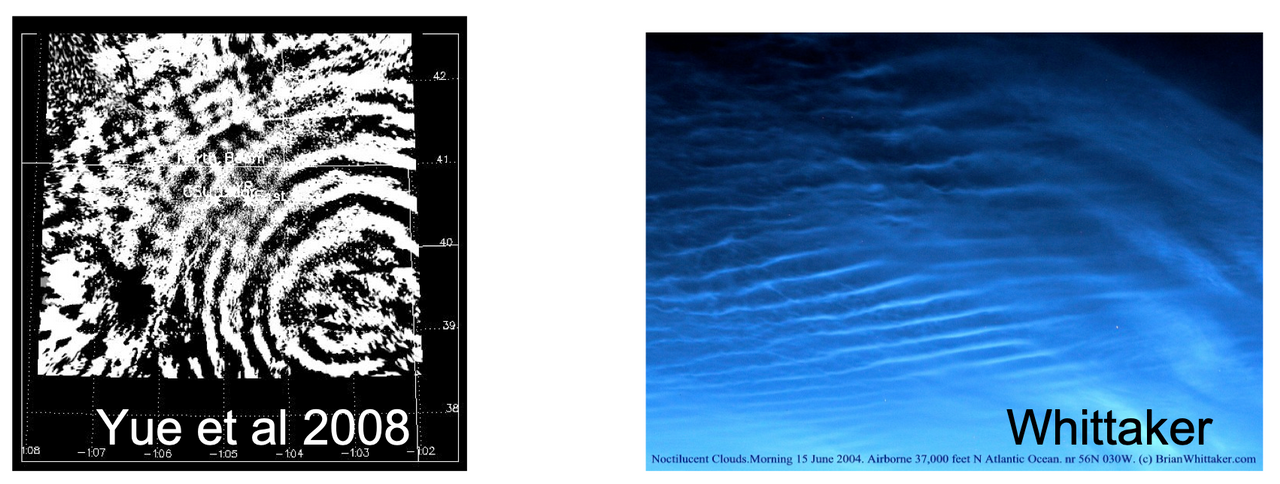

(3)
What Do They Look Like?
Above is a representation of a corrugated sheet moving through a fluid.
Air oscillates and from this a wave propagates. Looking at the looking at the movement of air next to the corrugation can help us see how the wave was created (see horizontal bar at bottom of image above).
A: the corrugations move up as time increases, forcing the air up and forward. Air particles get a velocity component
w' up, and a component
u' forward. This pushes air along purple arrow sloping up and right. Then, the air is compressed and increases pressure along the line (grey area) so it's a region of high pressure.
B: the corrugations fall, so the air also falls. The
w' and
u' air-velocity components are down and left. The air spreads out along the grey dashed lines that indicate low pressure. Vertical displacements follow the corrugations.
Air with maximum displacement moves along the blue lines shown sloping up and right. Air cools by adiabatic cooling as it rises so blue lines are where the wave is coldest.
Air along the red lines are displaced down, lining up with low points in the corrugations. They are heated by adiabatic processes so air along this line is the warmest.

Generation and propagation of gravity waves require stable atmospheric conditions. If the environmental lapse rate and adiabatic lapse rate are known, a certain period of oscillation can be found (Brunt-Vaisala period).
This period is that of a parcel of air displaced and
c(int) = wavelength/period
then allowed to oscillate freely. Gravity waves cannot have an intrinsic period (period measured as observed from frame of reference of the air) that is less than the Brunt-Vaisala period.

Horizontal wavelength is the horizontal distance between identical wavefronts.
Vertical wavelength is the vertical distance between identical wavefronts.
The horizontal wavelengths are larger than the vertical ones. (3)
(3)
For periods greater than Brunt Vaisala period and less than a few hours:
(Horizontal Wavelength)/(Vertical Wavelength) =
(Wave Period)/(Brunt-Vaisala Period)






